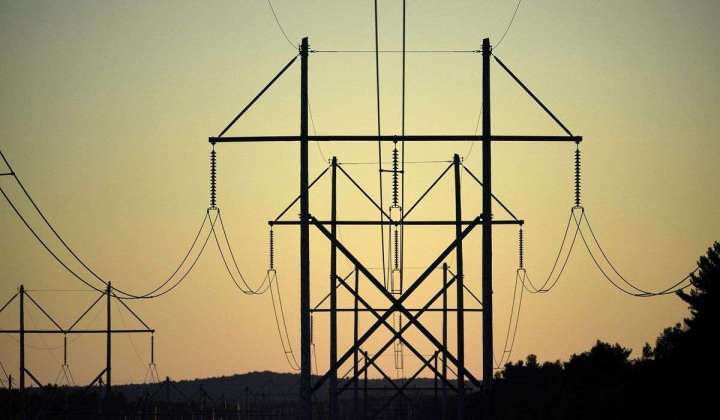Hasty rollouts lead to rolling blackouts; hot, dark summer on horizon if renewable energy fails

Motionless windmills, solar plant glitches, shuttered coal plants and low water levels create a recipe for widespread power outages this summer, the country’s leading watchdog on power grid reliability warns.
An assessment from the North American Electric Reliability Corp. found that electrical grids powering two-thirds of the U.S. are “at risk of energy shortfalls” during summer heat waves.
NERC officials warned Congress that the threat will likely worsen unless the U.S. “recalibrates” its effort to transform the nation’s power grid to renewable energy by focusing on reliability.
“Our assessments demonstrate that the electric grid is operating ever closer to the edge, where more frequent and more serious disruptions are increasingly likely,” James B. Robb, NERC’s president and chief executive officer, told the Senate Energy and Natural Resources Committee on June 1.
The risk of summer outages is high in the West, where intermittent solar and wind power have been increasingly incorporated into the energy grid.
The renewable power scheme is forcing California and other states to rely on energy transfers from other regions, which might not be available, to meet demand during periods of high usage.
SEE ALSO: White House calls Canadian wildfires an ‘alarming’ example of climate change
President Biden’s environmental rules also increase the threat of power outages, NERC reports.
New pollution caps from the Environmental Protection Agency require coal- and gas-fired power plants to reduce emissions impacting states downwind. NERC said plants in 23 states will likely limit hours of operation this year to install equipment that controls emissions. That could lead to supply shortages during extreme heat.
The EPA rule impacts Nevada, Utah and several states in the Gulf Coast, mid-Atlantic and Midwest.
The NERC assessment found no areas of the U.S. at risk of energy shortages during normal summer peak demand, but it determined that temperatures beyond the normal range would increase the number of states at elevated risk.
Mr. Robb told senators of “the prospect of more frequent and serious disruptions that threaten human well-being and economic productivity.”
He called for expanding infrastructure for reliable energy, particularly natural gas.
During two consecutive summers, Texas and California have asked consumers to cut power usage and, in some cases, have implemented rolling blackouts. Both states have significantly increased renewable energy sources in their power grids.
In Texas, where wind generates nearly a quarter of the state’s electricity, consumers last summer were asked to reduce power usage to avert blackouts during a blistering heat wave. With little wind power, households were asked to pause electric vehicle charging, turn up thermostats and take other steps to cut usage.
Renewables, including hydropower, supply about half of California’s energy grid. California is also the nation’s largest importer of electricity. It relies on other states to provide up to a third of its supply.
Reliance on renewables has left California vulnerable to blackouts. Summer wildfires and the needs of other states can hinder energy transfers.
During a heat wave last year, the state’s power grid operator asked consumers to crank up thermostats to 78 degrees and avoid using large appliances in the afternoon and evening to avert power outages.
Sen. Joe Manchin III, West Virginia Democrat and chairman of the Energy and Natural Resources Committee, said the reason for the grid’s creeping instability is the hasty retirement of critical power plants to help fulfill the left’s agenda to replace fossil fuels.
Coal, gas, nuclear and even hydropower, which some green energy advocates oppose, have been cut from the grid without reliable replacements, he said.
Mr. Manchin said coal plants proved to be critical in reducing power outages during a massive blizzard in December that impacted the central and eastern portions of the U.S.
“But this EPA won’t let electric reliability inconvenience their anti-fossil agenda,” Mr. Manchin said. “Within six months of Winter Storm Elliott, EPA’s response was to roll out four new regulations poised to shut down 50,000 megawatts or more of coal power over the next decade, whether the grid is ready for it or not. EPA is not hiding their strategy. It’s death by a thousand unreasonable cuts.”
Last month, the EPA announced that the nation’s 3,400 coal and natural gas plants must either reduce nearly all carbon emissions by 2038 or shut down.
Romany Webb, deputy director of Columbia University’s Sabin Center for Climate Change Law, said reliability is an important goal for the power grid but addressing climate change is critical because it is causing extreme weather events that undermine stability.
“We know that if we don’t undertake the transition to renewables to decarbonize our power sector, then we are going to continue to see these intensifying climate impacts that are themselves a threat to electric system reliability,” Ms. Webb told The Washington Times.
Ms. Webb said the nation has the resources and technical ability to “achieve a clean energy future,” but she added that the transformation must be paced to ensure that the electricity grid’s reliability, under all weather conditions, isn’t threatened.
“As it exists today, this balance is out of calibration and must be corrected,” she said.






